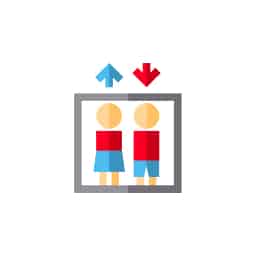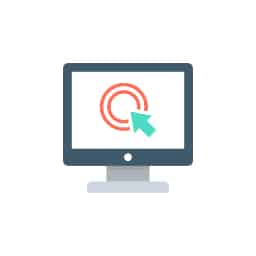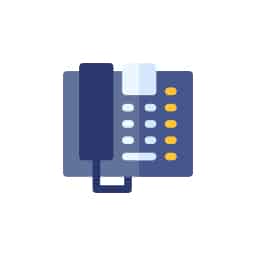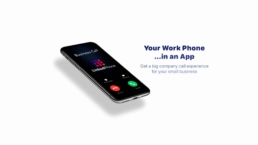How to Use Call Routing & Call Forwarding On Any Device
Table of Contents
- What is Call Routing?
- How Does Call Routing Work?
- Benefits & Advantages of Routing Calls
- Different Methods to Route Calls
- How to Improve Customer Experience By Routing Calls
- How to Use Call Forwarding on Any Device
- Build An Efficient Call Routing Infrastructure with LinkedPhone
- Small Business Resources for Business & Personal Growth
What is Call Routing?
Call routing, or automatic call distribution (ACD), is a feature of business phone systems for managing and distributing calls from customers. Incoming calls are forwarded to a specific individual or team based on pre-determined criteria such as caller needs or location.
We’ve all been there: you call a business and you end up talking to three different agents before you get the right person. Or you wait and wait just to find out the person you need is out for lunch, or you need to call a different location. By the time you get the right person on the line, you’ve spent far more time waiting on the phone than is really necessary, considering all the technology we have available today.
As a business, you know how important it is to ensure that you don’t keep customers waiting, you don’t miss any customer inquiries, and that you’re always there to help. Call routing makes sure that your customers’ and clients’ calls are always directed to the right person in a timely and efficient manner. Let’s explore the ins and outs of call management and how they can help you stay connected with your customers.
LinkedPhone serves the small business community with local & toll-free business numbers that work with your cell phone, desk phone, & laptop. Add a 2nd phone number to your cell phone with our mobile app. Talk & text with clients on the go. Add team members too. Finally break free from the desk phone. At LinkedPhone, freedom rings! 🔔📱💻☎️

What does Call Routing mean?
Call routing is a call management feature for business phone systems where incoming phone calls are routed to the right person, department, or location based on pre-established rules and criteria. It is a critical component of telephone-based customer service that helps ensure calls are handled quickly and efficiently. With the right inbound call management system, businesses can guarantee that customers get the help they need in the shortest amount of time possible. Automated routing occurs before someone on the receiving end picks up the call, and helps ensure the person picking up the call is the right person to answer the call.
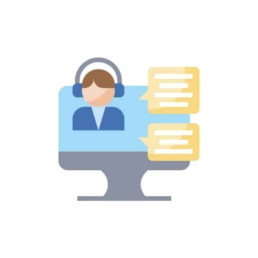
How Does Call Routing Work?
Routing systems use a variety of technologies and processes to route incoming calls to the correct destination. Automated IVR (interactive voice response) systems and VOIP (Voice over Internet Protocol) routing systems are commonly used to manage incoming calls and direct them to the right person or department. Traditional routing systems using technology like private branch exchange (PBX) are still in use, but they are not as efficient or cost-effective as digital IVR and VOIP routing systems.
Automated IVR Routing
Automated IVR routing systems use a series of pre-recorded messages to direct incoming calls to the right person or department. The software called can be programmed to route phone calls based on the caller’s input, such as their phone number, dial pad input, or voice response. IVR routing can also be used to provide information such as business hours and directions. But these are just the basics; there are many possibilities for using an IVR virtual receptionist (or auto-attendant) to rapidly handle simple customer requests without having to involve a human agent.
VOIP Routing vs Traditional Routing Systems
VoIP routing allows customers and team members to reach an employee on their cell phone, computer, tablet, or any device with an Internet connection, freeing workers from their landlines so they can do business anywhere. VoIP routing systems are more efficient and cost-effective than traditional routing. They use a combination of voice recognition technology and automated routing to direct calls more quickly and accurately. VOIP routing systems allow businesses to forward calls to different numbers and locations, as well as access call analytics to better manage call traffic.

Benefits & Advantages of Routing Calls
Routing systems provide many different benefits for businesses, including:
-
- Improved customer service: Systems that direct incoming calls to the right department or person help to ensure that customers get the assistance they need, increasing customer satisfaction.
- Reduced wait times: Routed calls can help to reduce wait times by directing calls to the right department or person as quickly as possible.
- Increased efficiency: By routing calls, businesses can reduce the need for manual call handling and transferring, which can help to save time and money and free up employees for more meaningful work.
- Improved scalability: Calling systems can be easily scaled up or down, depending on the needs of the business. This can be especially helpful for businesses that experience seasonal call spikes.
- Flexibility: Route business calls to mobile phones, landlines, VoIP office phones, and computers.

Different Methods to Route Calls
There are a variety of methods that can be employed to ensure calls get to the right person or department. Each of these methods has its own advantages and disadvantages, so it’s important to consider which one is best for your particular business needs. Businesses should consider the number of calls they receive, their customer service needs, and their budget. Choosing the right method will help ensure that customers are receiving the best service possible and that businesses are operating efficiently.
Here are six different methods you can choose from:
Time-based routing
Time-based routing is one of the most common methods used to route calls. It allows you to set specific times when calls should be forwarded to different departments or personnel. For example, you could assign calls to go to the sales department during business hours and to the customer service department during evenings and weekends.
Skills-based routing
Skills-based routing is used to route calls to the right person based on the caller’s needs. This system uses information about the caller’s problem or request in order to route the call to the most qualified person. For example, if a customer is calling about a technical issue, the call can be routed to a technical support specialist, or if the customer needs sales, they are sent directly to a sales agent.
Round robin routing
Round robin routing involves distributing calls evenly among a group of agents. When a call comes in, it is routed to the next available agent in the group. This method is used to ensure that all agents have an equal workload and that all calls are handled in a timely manner.
Geographical routing
Geographical phone routing allows you to route calls to the closest available agent or department. This is often used in businesses that have multiple locations, as it ensures that calls are routed to the most appropriate physical location.
Predictive routing
Predictive routing brings a technologically advanced approach to call routing. Predictive routing uses caller data, such as past call history, to evaluate interactions based on a customer’s preferences, behaviors, and personality type and then connects customers with the best agent available based on matching personality, communication preferences, and behavioral characteristics.
Priority routing
Priority routing allows you to prioritize certain calls over others. This is often used by customer service departments in order to route calls from VIP customers or high-priority issues to the most qualified agents.
How to Improve Customer Experience By Routing Calls
Providing excellent customer experience is one of the top proven customer retention strategies for better business growth, and decreasing wait time on the phone is an excellent place to start. Routing calls helps businesses ensure that customers are getting the best possible service and that their inquiries are being handled quickly and efficiently. By managing calls properly, businesses can improve customer experience significantly.
The first step is to identify the types of customer inquiries that come in. This will help businesses understand where calls should be routed and which customer service representatives should be assigned to handle them. Additionally, businesses should evaluate their customer service representatives to ensure they have the skills and knowledge to handle the types of inquiries that come in. This will help ensure that customer inquiries are handled quickly and effectively.
Once businesses have identified the types of customer inquiries, they should then create a system for routing calls using one of the methods outlined above. It is important to take the time to create an effective business welcome greeting that works with your routing system. Additionally, businesses should monitor the effectiveness of the system and make adjustments as needed to ensure that customer inquiries are being routed to the right customer service representative.
Finally, businesses should utilize customer feedback to further improve customer experience. By collecting customer feedback, businesses can gain insight into the customer experience and identify areas of improvement. This will help businesses ensure that their customer inquiries are being handled in the best possible way.
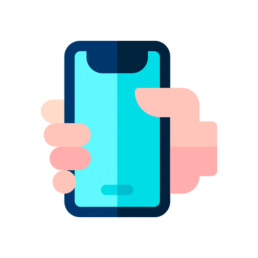
How to Use Call Forwarding On Any Device
Call forwarding is more basic than routing, but is a useful feature that allows users to easily forward incoming calls to another phone number. It’s a great way to ensure that you never miss an important call. Call forwarding is available on most phones and devices. Here’s how to set it up:
Traditional or Landline Phones
If you are using a traditional or landline phone, forwarding calls may be necessary anytime you are away from your desk. Luckily, the process is simple. On most carriers, first dial *72 on your phone, then type in the ten digit number you want your calls forwarded to, press #, and wait for a confirmation beep before hanging up.
iPhone
Go to Settings, select Phone and then Call Forwarding. Type in the ten digit number you want your calls forwarded to.
Android
Go to Settings or Call Settings and select Call Forwarding. Choose one of the forwarding options and enter the ten digit number that will receive your forwarded calls.
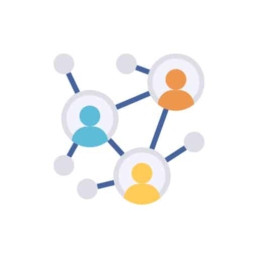
Build An Efficient Call Routing Infrastructure with LinkedPhone
Routing calls properly is one of the best ways to keep customers happy, and to help ensure your success as an entrepreneur or small business owner. At LinkedPhone, we provide virtual business calling systems that allow you to route business calls to any phone number you choose, to your colleagues or to entire teams.
Sign up for a free 7-day trial of LinkedPhone today and see what call routing can do for your business!
Business Growth Toolkit
Get the latest thought leadership insights on growing your business plus occasional LinkedPhone updates. We respect your inbox!
Small Business Resources
A special high five to Faith Dickens for her outstanding research and contributions to this article. We love working with and supporting like-minded entrepreneurs. Thank you Faith! ❤️
Get In Touch
We would love to hear from you.
Please contact us at any time with questions or feedback.







